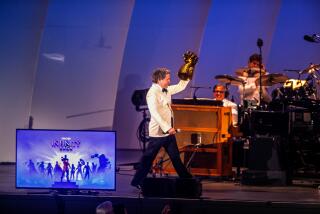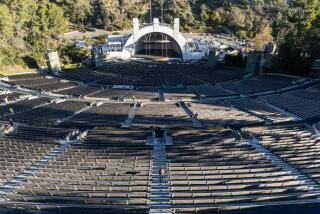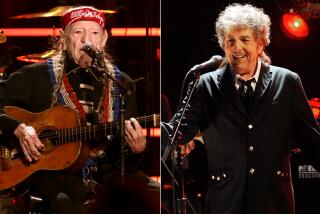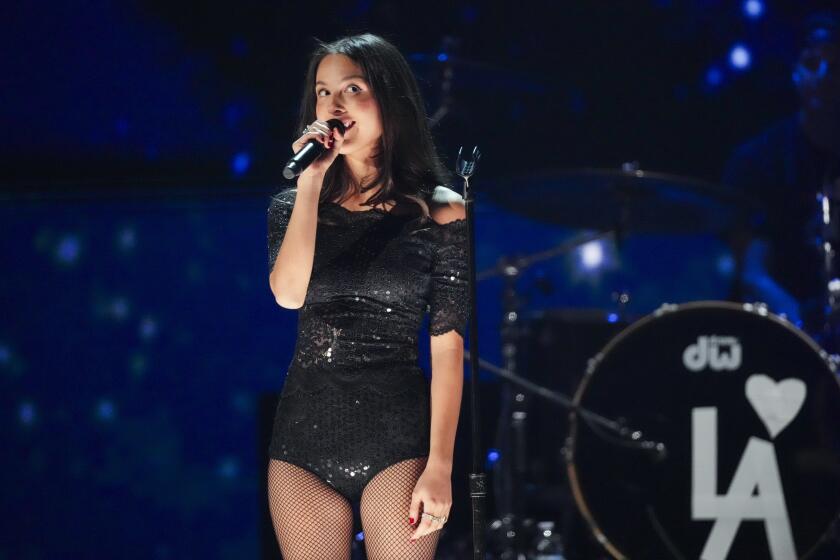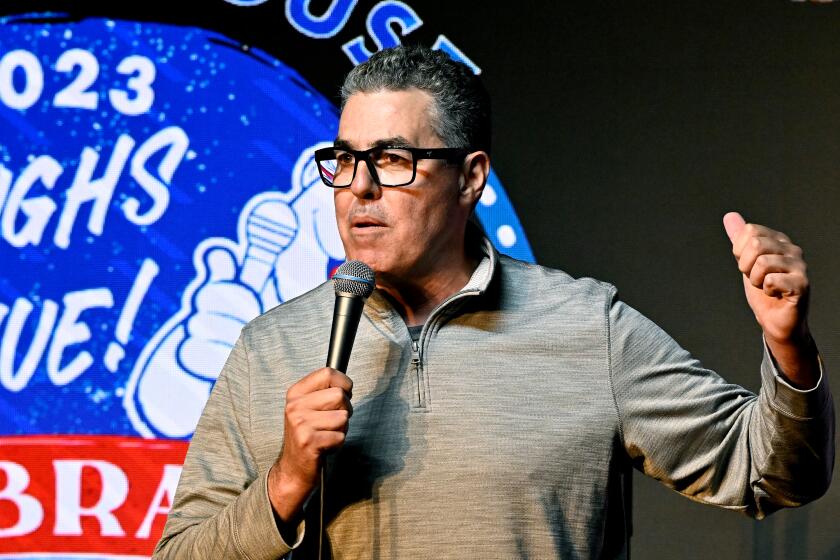JAZZ REVIEW : FOUR BOWL ACTS END CONCERT SERIES
- Share via
It’s all over at Hollywood Bowl, at least for the jazz segment of the local populace. The final “Jazz at the Bowl” concert of the season Wednesday night produced the only disappointing turnout in what has been a successful series. Only 10,709 of the faithful showed up despite a program that offered four attractions.
The trouble was that none of the four is a blockbuster box-office draw, though Bobby McFerrin seems a sure bet to become one. The singer was reviewed here not long ago at the Montreal Jazz Festival. Essentially, this was the same show with his familiar bag of mostly wordless tricks: bass and percussion sound effects, underwater noises, Donald Duck distortions, operatic and folk song satire and, inevitably, enough sing-along to keep the audience happy.
An amazing performer who moves with a dancer’s grace, McFerrin is becoming more of a crowd pleaser and less of a musical artist as his popularity shoots up and his creative values edge down.
Also reviewed here recently at Carnegie Hall was the Modern Jazz Quartet. This was your typical MJQ run-through of mostly long-familiar material, played with impeccable professionalism. Someone seemed to have lighted a fire under John Lewis, whose piano has rarely been as swingingly incisive.
Carmen McRae was her customary, sometimes hard-edged yet occasionally gentle and soothing self. Her take-it-or-leave-it jazz contralto has been sui generis for decades, as has her proclivity for using songs that have meaning for her simply because her idol, Billie Holiday, recorded them long ago--such songs as “Getting Some Fun Out of Life.”
There was compensation, however, in the rhythmic delights of “No More Blues,” the tenderness of “Love Dance” and the predictable yet still compelling story of “Guess Who I Saw Today,” which she assured us she was the first to sing. (Take that, Nancy Wilson.)
McRae’s set was so short--a little more than 30 minutes--that she never even got around to playing the piano. Her accompaniment, with Eric Gunnison at the keyboard, reflected her usual good taste in the selection of a sideman.
The opening set promised more than it delivered. On paper the L.A. Jazz Legends looked like a failure-proof group, yet these respected veterans came unprepared to conquer.
With Harry Edison’s trumpet joined by the saxophones of Red Holloway and Teddy Edwards, some fresh and exciting ideas, and at least a couple of well-planned compositions, could have been organized. Instead, the men acted as if this were just another set at Donte’s.
Except for the last couple of numbers, when they joined up for a few blues riffs, the seven men were never on stage playing together; each number was a solo showcase, ranging from pleasant (pianist Jimmy Rowles in “Grooveyard”) to desultory (Edwards in a lackluster “Lady Be Good”). Holloway managed to get some spirit into his blues piece, but the little heat he engendered was not enough to keep the flame from flickering out.
More to Read
The biggest entertainment stories
Get our big stories about Hollywood, film, television, music, arts, culture and more right in your inbox as soon as they publish.
You may occasionally receive promotional content from the Los Angeles Times.
